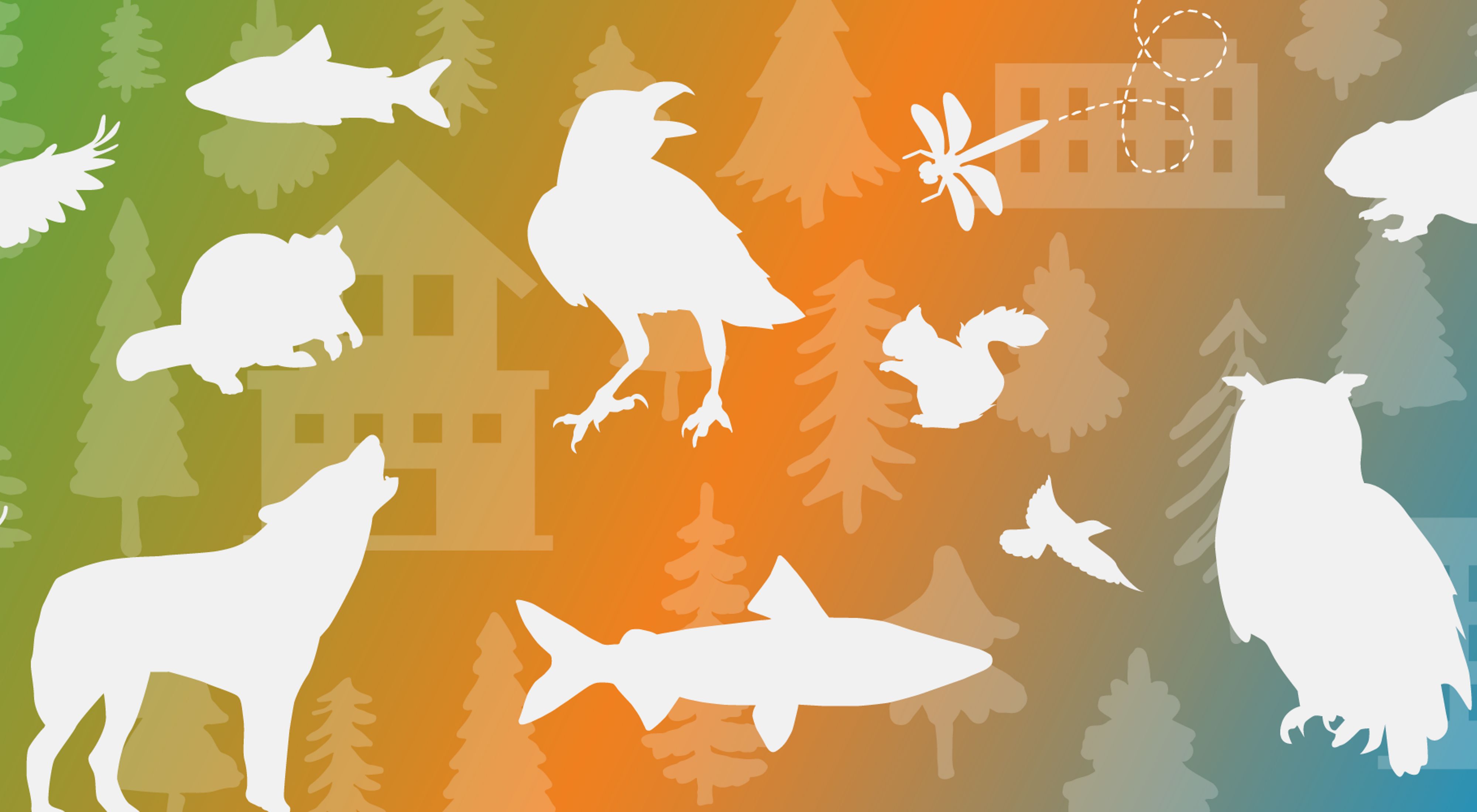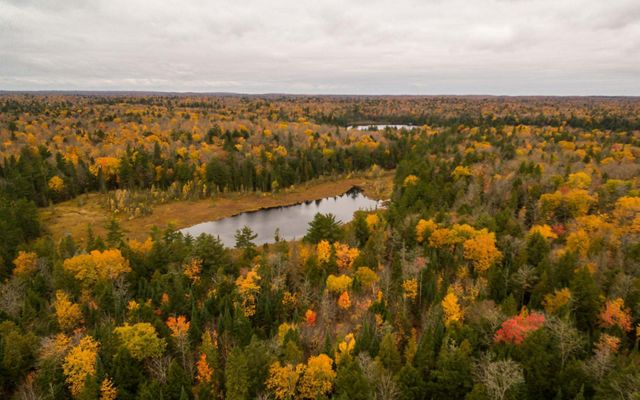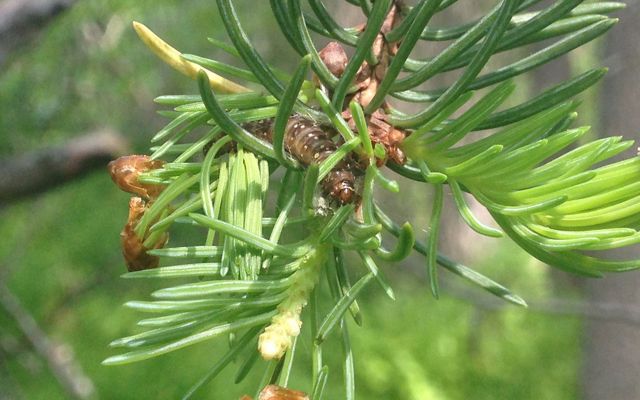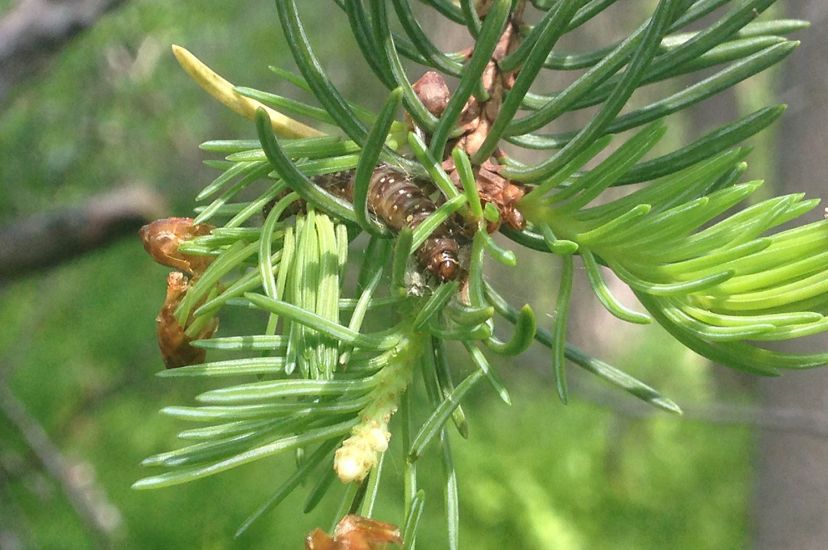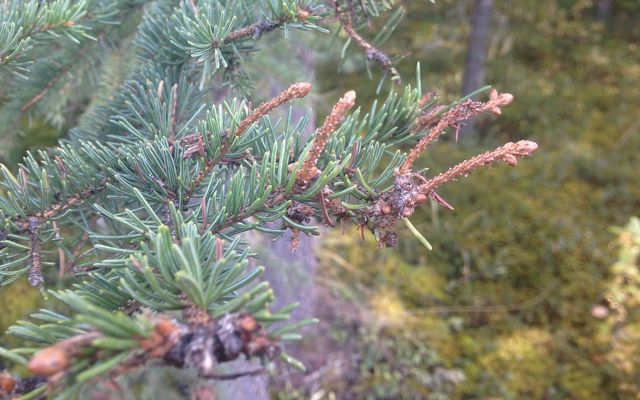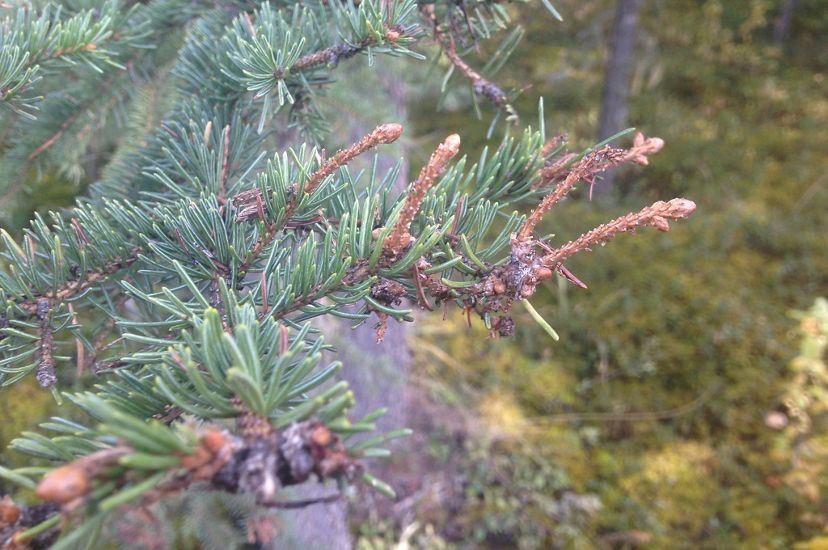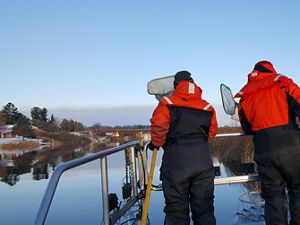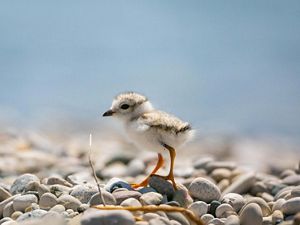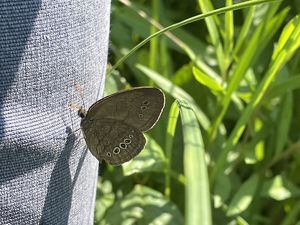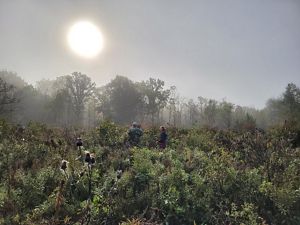Four Species, Four Perspectives on Climate Change
For these Michigan residents, things are heating up. Explore their perspectives on climate change and the work being done to support them.
We’ve all heard the chatter. The planet is warming, and we have to do something about it. This constant stream of news can feel overwhelming and the doomscrolling never-ending. But the conversation about climate change doesn’t have to be all doom and gloom. There is real work happening across Michigan to support species, protect habitats and build a more climate-resilient state.
Each of the species below is impacted in their own way by climate change. While they may be facing difficulties, their futures are full of hope.
Climate & Wildlife
Taking the highway to a new home
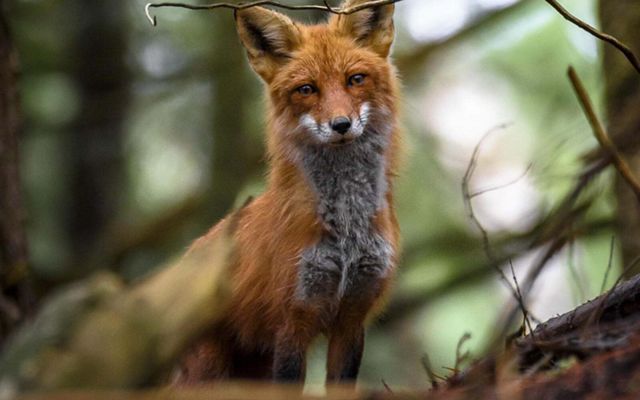
Red Fox
As the rains fall and the water rises, this red fox’s den is quickly becoming uninhabitable. With a wet coat, muddy paws and a family in tow, they begin the journey to find a new home. But where to go...
After the flood wiped out this fox’s den, where did it go? Warmer temperatures, increased flooding and other climate threats are altering and destroying habitats, leaving some species without a home. Studies show that plants and animals are moving 11 miles north and 36 feet higher in elevation each decade in response to climate shifts.
All is not lost. Over the past 10 years, TNC scientists have mapped a network of landscapes across the United States with unique and diverse topographies, geologies and other characteristics that can help withstand climate impacts—including Michigan's Michigamme Highlands.
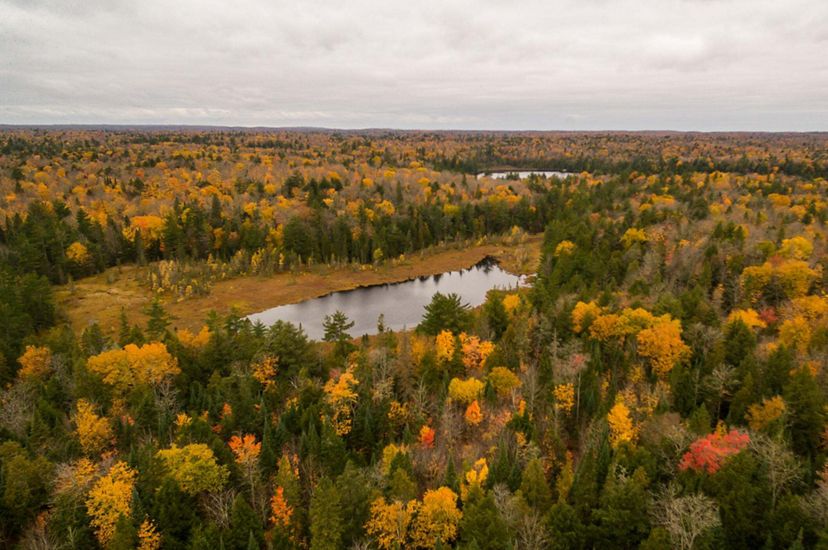
How You Can Help
- Explore the resilient lands mapping tool
- Voice your support for the Recovering America's Wildlife Act
This roadmap of “natural highways and neighborhoods” shows where plant and animal species have the best chance to find suitable habitat nearby in a changing climate. Our challenge is to accelerate the pace and scale of conservation in these key regions, and establish a representative network of resilient, connected lands that can continue to provide for the needs of both people and nature.
The Michigamme Highlands represent some of the largest remaining unbroken swaths of northern hardwood forest in North America. Protected lands in the Michigamme Highlands provide abundant habitat for a range of mammal species including moose, bear, marten and lynx, as well as many bird species. Migratory birds that prefer these mature forests include black-throated blue warbler and northern parula, and species of conservation concern such as wood thrush and Canada warbler.
Climate & Forests
A bird’s eye view of climate change
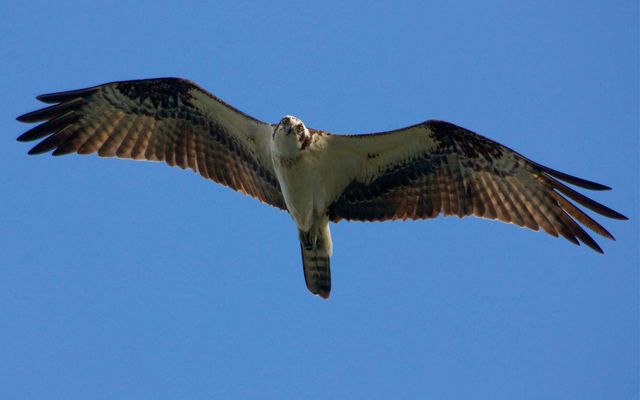
Osprey
As an osprey soars through the treetops along a gently flowing stream, their eyes search for the glimmer of a fish in the water. They're ready to dive at the first sign of their prey, but there’s no food in sight.

So, what’s keeping this osprey from its lunch? To find that answer, we have to look at forest health. A diverse, healthy forest prevents erosion, maintains shade cover over streams and preserves the colder water temperatures that fish and other aquatic species depend on. However, there are elements working against our forests. Some trees fall victim to invasive species or pathogens.
For example, spruce budworm is a native pest that defoliates the spruce and fir trees along streams resulting in the daylighting of streams—the removal of the branches that provide shade. Daylighting of streams harms native brook trout by increasing stream temperatures and degrading critical cold-water streams.
How You Can Help
- Landowners can enroll in the Family Forest Carbon Program
- Report invasive species in your neighborhood or local park
- Only use locally harvested firewood
The invasive pests harm the health of the forest and its resilience to the effects of climate change. By planting a diverse array of trees along the shore, to replace the damaged trees, we can proactively encourage forest health while protecting the future of our streams (and the osprey’s lunch).
TNC has partnered with the U.S. Forest Service to restore and protect forests along streams and rivers in the Ottawa National Forest, planting trees on over 1,100 acres. In the spring of 2023, we continued that work by planting more than 44,000 native seedlings, particularly in areas threatened or impacted by pests like the spruce budworm and emerald ash borer.
The project, long-term, will create a canopy over the river which will help keep the temperatures down and aid in healthy fish habitats. It also diversifies the forest cover near streams that is needed for both aquatic and terrestrial wildlife and protects water quality by stabilizing stream banks to reduce erosion potential.
Small Actions, Big Impact
When thinking about climate change, it’s easy to become overwhelmed. But simple actions make a big impact. Be a part of the bigger solution.

Climate & Water
Warming waters and unwanted pests

Lake Whitefish
The lake whitefish darts along the edge of a rocky reef in Lake Michigan. They lay their eggs in the crevices, but lately fewer eggs have made it through the critical spawning period. In fact, the reef isn’t keeping them as safe as it usually does.
What’s impacting the lake whitefish’s eggs? What’s changed in the reef? The answer could be related to reductions in ice cover on the Great Lakes due to climate change. Lake whitefish eggs have to incubate in reef habitat for the entire winter—they spawn in November and the eggs hatch in April. Ice cover helps reduce how often the reefs get pounded by wave action. With reduced ice cover, lake whitefish eggs that aren't well protected deep within reef habitat are susceptible to getting dislodged. Away from the safety of the reef, they wash up on shore or are eaten by predators.
With less ice cover, we need high quality reefs with deep rock layers to protect whitefish eggs now more than ever. Lake whitefish populations in Lake Michigan and Lake Huron have undergone significant declines again—following a resurgence in the 1990s—due to changes to the food web as well as changes to the ice cover and other climate impacts. To help this species build up their population and protect the food web, we are working to restore spawning reefs in the Great Lakes and re-establish river spawning runs of lake whitefish. In 2015, TNC worked with the Michigan Department of Natural Resources (DNR) and Central Michigan University (CMU) to restore a reef near Elk Rapids.
How You Can Help
- Stop the spread of invasive species by following the "Clean, Drain, Dry" method
- Support local commercial fishing by buying fish caught in the Great Lakes
- Voice your support for the Recovering America's Wildlife Act
By rebuilding the limestone rock cover along damaged spawning grounds, iconic Great Lakes species like lake trout, cisco and whitefish have a better chance of building a healthy population. While we continue to monitor the Elk Rapids reef alongside our partners, attention has shifted to the unknown.
We still have a lot to learn about the quality of other reefs in the Great Lakes. Accessing them requires training and the right equipment. TNC is working closely with the Michigan DNR, the Grand Traverse Band of Ottawa and Chippewa Indians, the U.S. Geological Survey (USGS) and CMU to assess the status of underwater reefs in eastern Lake Michigan. Together we’re building a better picture of how Great Lakes reefs are used by native fish species. This information will help us to identify priorities for reef protection and restoration.
Climate & People
A world without wetlands
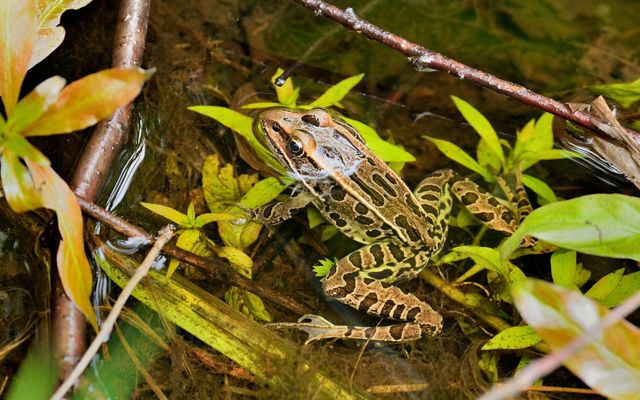
Northern Leopard Frog
A northern leopard frog looks out across their wetland habitat. It’s spring and they’re preparing to lay their eggs in the still water of a nearby pond. But lately, things have felt different. They’ve noticed a lot of machinery and people causing a commotion near their home. What could they be up to?

What do we have in common with northern leopard frogs? We both need wetlands. Whether natural or constructed—wetlands are important for protecting biodiversity and mitigating climate change. Healthy wetlands help manage stormwater runoff—absorbing pollutants, reducing flooding impacts in our cities and stabilizing coastlines. They are also carbon sinks, capturing and storing CO2 from the atmosphere.
Despite the outsize role wetlands play in tackling climate change, they are rapidly disappearing across the Midwest. Wetlands have been—and continue to be—drained and filled in order to make way for agriculture or development. Roughly half of Michigan’s and Wisconsin’s wetland acreage has been lost.
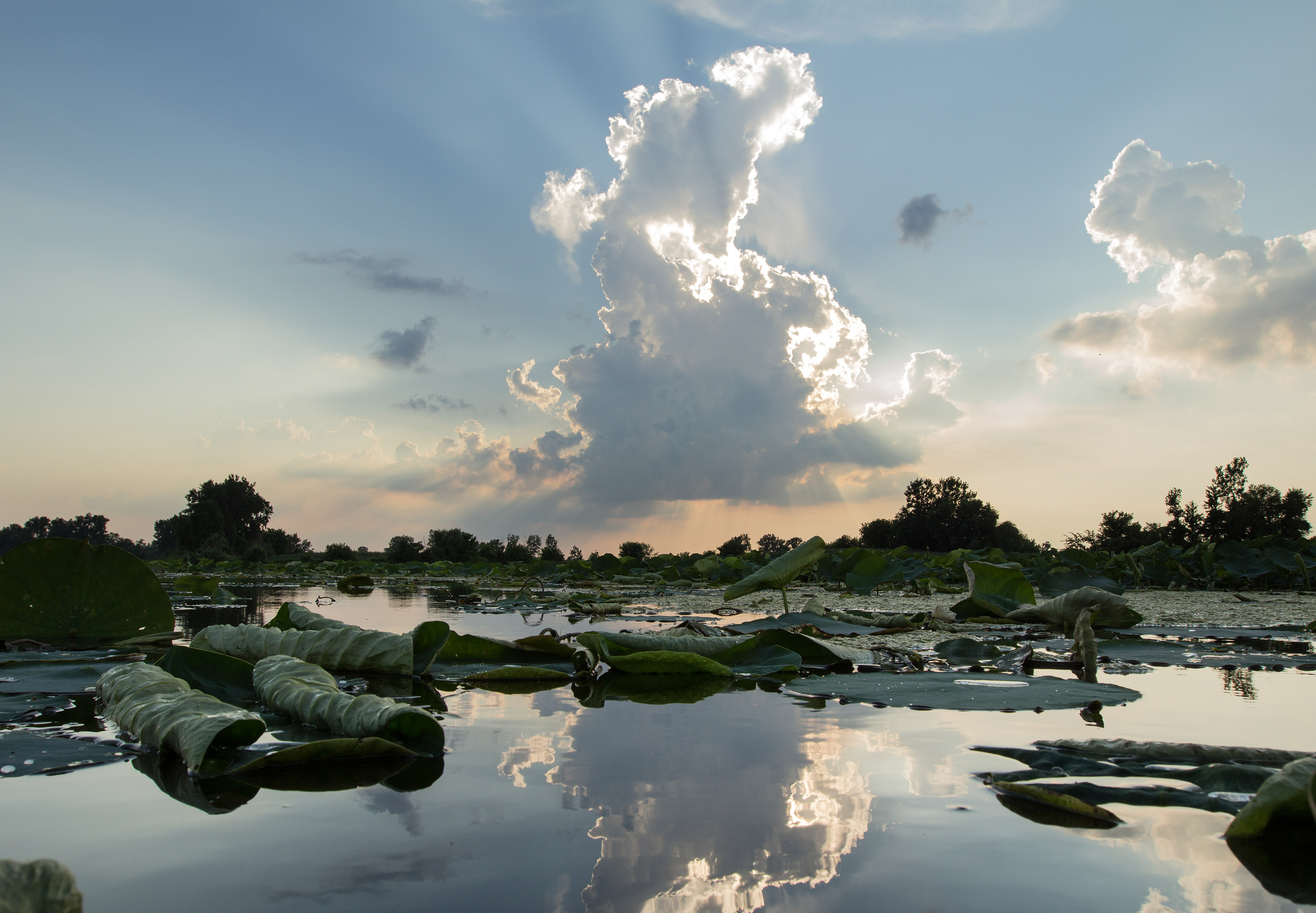
Feature
Weird, Wonderous Wetlands
Wetlands—areas where water is present at or near the surface of the soil some or all of the year—truly are where the wild things are. Microorganisms thrive in the damp soil. Dragonflies glide above the muck. Salamanders and frogs hide among carnivorous plants, and herons and beavers wade in the water.
They are also among the most productive ecosystems in the world. Wetlands are, in essence, “biological supermarkets” that produce immense amounts of food and attract and sustain countless numbers of animal species.
Learn more about the weird and wonderous wetlands of the Midwest.
Ways You Can Help
- Start by visiting a wetland near you
- Help monitor wetlands by identifying species using iNaturalist
Work is happening across the state to address the rapid loss of our wetlands so that nature and people can continue to benefit. For more than 10 years, TNC has worked to restore 2,200 acres of highly altered, degraded wetland habitat that had been divided by barrier dikes and separated from Lake Erie since the 1950s.
Native fish and other aquatic life are now accessing new breeding and spawning areas for the first time in more than 60 years at the Erie Marsh Preserve. The reconnection between wetland and lake has also helped control invasive Phragmites, allowing some of Michigan’s few remaining colonies of the state-threatened American lotus and swamp rose-mallow to thrive.
However, leopard frogs don’t just rely on wetland habitats. They use adjacent uplands for foraging in the summer before returning to the wetlands and ponds for hibernation. Just protecting and restoring wetlands won’t cut it. It’s essential we preserve a diverse array of local habitats. You can see this work in action at Nan Weston Nature Preserve where the wetlands nested within an upland landscape offer critical habitat for amphibians.
